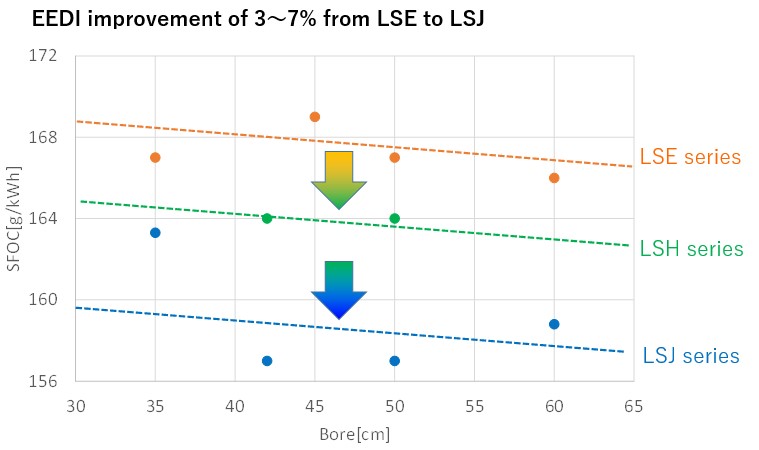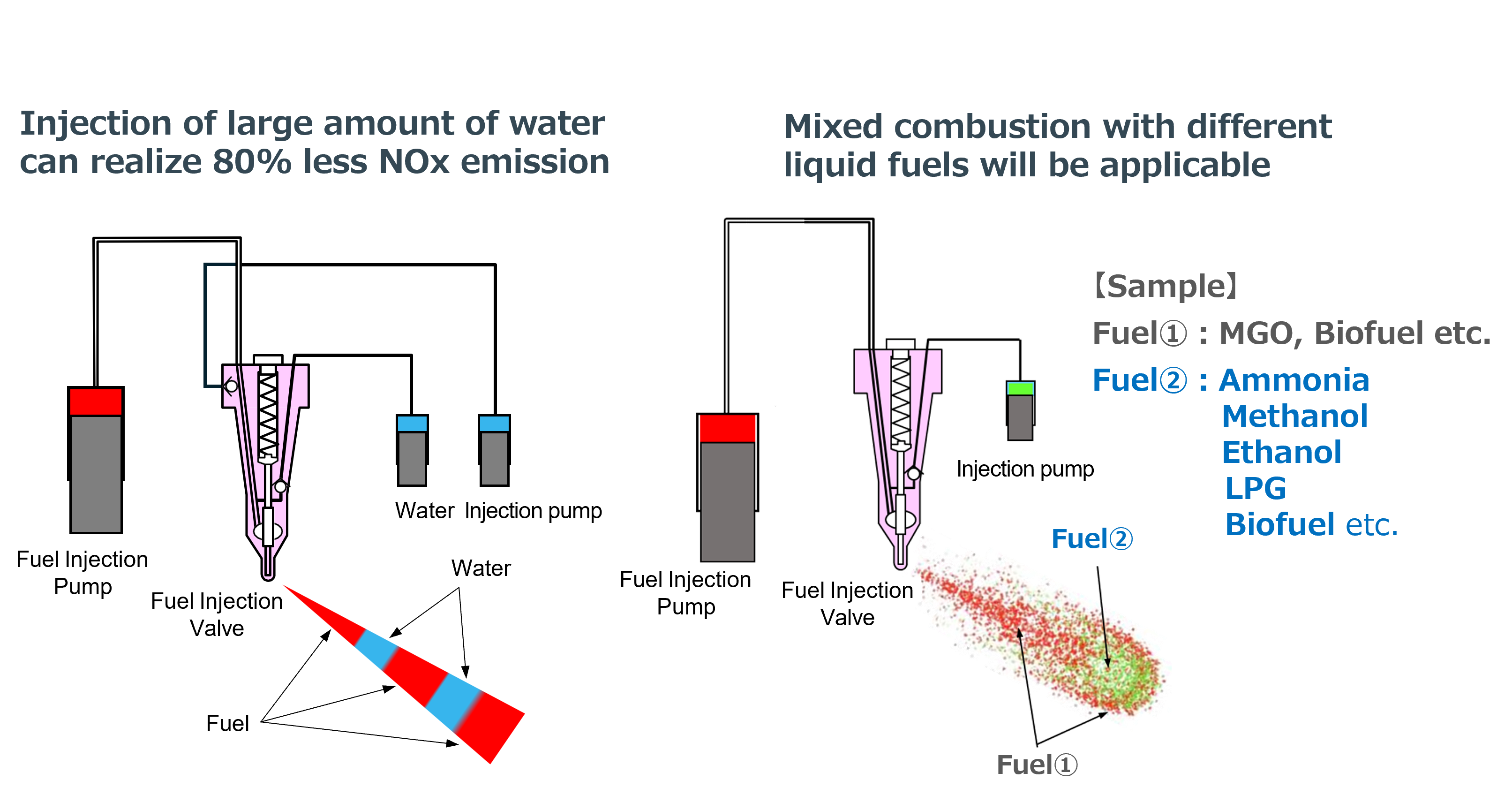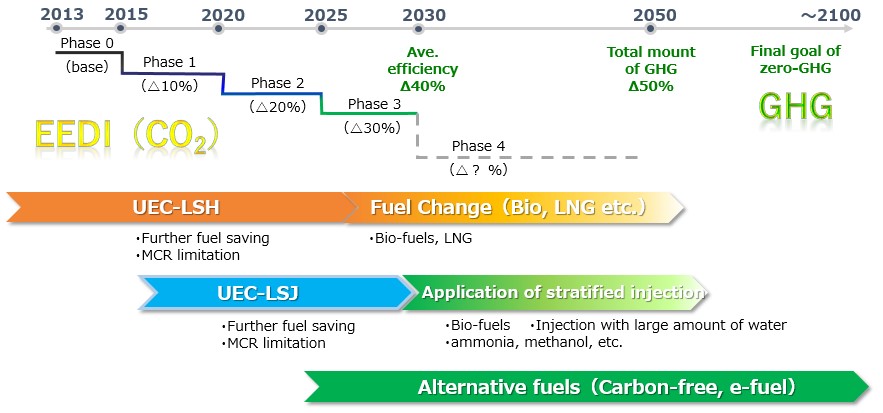Environmentally-Friendly Technologies
We will introduce our initiatives for GHG (alternative fuels for the future), as our environmentally-responsive technology for NOx, SOx, and CO2 regulations.
Ultra-low fuel consumption engine “UEC-LSJ”
“UEC-LSJ” is the ultra-low fuel consumption engine developed exclusively for MGO/MDO mono-fuel. UEC-LSJ is compatible with both NOx and SOx regulations, that can provide benefits to shop owners, charter companies, shipyards and all other stakeholders. 5UEC50LSJ-EGR was completed in 2018 and 6UEC35LSJ was completed in 2022.

History of Fuel Saving for EEDI* Improvement
The below figure shows how fuel saving has been improved by J-ENG.
The horizontal axis and the vertical axis represent engine's bore size and specific fuel oil consumption(SFOC), plotting how SFOC has been improved by each series engines of UEC-LSE, LSH and LSJ, starting since 2000, 2013 and 2018, respectively. The EEDI of UEC-LSJ series engines has been improved by 3~7% comparing with LSE series through lower fuel consumption.
*EEDI: Energy Efficiency Design Index
Initiatives for NOx (Tier III) Regulations
Our lineup of low pressure EGR, low pressure SCR and high pressure SCR systems are IMO NOx Tier III compatible. These are all uniquely-developed systems that have a simple configuration, simple operational control, excellent fuel economy, and NOx trade-off, high reliability, and reduced CAPEX and OPEX. We will introduce the development history, development concept, and system overview.
How the Stratified Fuel Injection System Works
The stratified fuel injection system, applied for LSJ series engines, has a wide flexibility. The following two applications are under developing:
1.To reduce NOx emissions by increasing injected amount of water
An LSJ series engine uses water about half of fuel oil amount in the stratified fuel injection technology. When increasing the water portion further, it is possibly to comply with NOx Tier III regulation without EGR or SCR system.
An experiment showed an 80% NOx reduction when increasing the water amount as the same as fuel oil.
2.To apply carbon-free fuels, such as ammonia, bio-fuels etc., instead of water to reduce GHG
Mixed combustion by MGO, Bio-fuels with low-carbon and/or carbon-free fuel of Ammonia, Methanol, Ethanol, LPG and Bio-fuels can reduce GHG.

Initiatives for SOx (2020) Regulations
The regulations for the sulfur content in fuels used in regulated ocean areas was set to 0.1% or below in January 2015, and from January 2020, the sulfur content regulations for all other ocean areas aside from the regulated areas was set to 0.5% or below. Unlike the NOx regulations, these regulations is applied to ships that are already in service.
In order to comply with these regulations, in addition to using distillate with a low sulfur content (MOG or MDO with a sulfur content of 0.5% or less), the compliant fuel oils with a sulfur content of 0.5% or less, and equipment (such as a SOx scrubber) that can reduce sulfur oxides in exhaust gases below the regulation value are used.
Precautions and guidelines for the compliant fuel oils and SOx scrubbers are provided as the UE Service Information.
Initiatives for GHG and Alternative Fuels in the Future
As an initiative for decarbonization, part of the countermeasures against global warming, we have entered into a joint research agreement on combustion using carbon-free fuels such as hydrogen and ammonia, together with National Maritime Research Institute, (National Research and Development Agency, part of National Institute of Maritime, Port and Aviation Technology).
We will be active in our initiatives for the research and development of new fuels, with the goal of realizing a decarbonized society that will reduce GHGs and can prevent global warming, as an energy society of the future in the shipping industry.

Roadmap to GHG Reduction
The below roadmap has been determined to reach the GHG reduction goals through EEDI improvement by fuel saving in three ways as:
1)Fuel change application of bio-fuels and LNG etc. after LSH series engines
2)Stratified fuel injection after LSJ series engines
3)New engine development using carbon-free fuels, such as hydrogen, ammonia and e-fuel etc.
